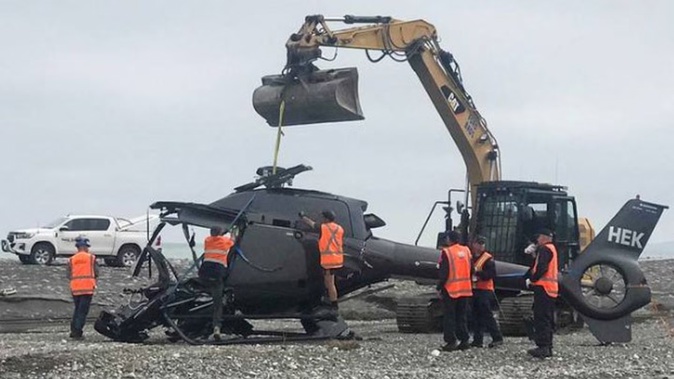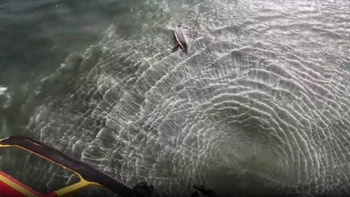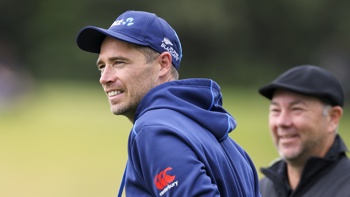
A helicopter crash north of Kaikoura that killed two people and orphaned two children was caused by a mistake by an inexperienced pilot, a crash investigation has concluded.
Pilot Andrew Hamish Davidson, 60, and his wife Lin Chen, 39, died when their helicopter crashed into the beach at Kēkerengū on December 15, 2020.
Their two children and another child survived the crash but were injured and pulled from the wreckage by locals who rushed to the scene.
Davidson was using a Eurocopter EC120-B to fly his family and a friend from Rangiora to Kekerengu north of Kaikoura for lunch at a café.
It was a fine day for flying, according to a Transport Accident Investigation Commission (TAIC) final crash report released today.
The chopper was approaching to land on a grassed area near the beach-side café at Kekerengu, turning towards the beach and heading downwind for a low-level pass to inspect the intended landing area.
It yawed suddenly, TAIC says, and descended with uncontrolled increasing rate of yaw, and was destroyed when it crashed on to the beach. Impact forces far exceeded the recommended level of crash protection for aircraft.
/cloudfront-ap-southeast-2.images.arcpublishing.com/nzme/AT4VQKT5DGZTXLUCB72PYR4E6I.jpg)
Andrew Hamish Davidson. Photo / Supplied
Yaw is when a helicopter’s blades go one way so the fuselage wants to go the other way. Pilots use the tail rotor to control which way the helicopter points.
A video recording held by TAIC shows that the rate of yaw increased from when it first started to turn and continued until it descended from view behind bushes.
The children survived largely because they were smaller and lighter than the adults, TAIC says.
TAIC’s chief investigator of accidents, Naveen Kozhuppakalam, said the accident happened at a critical phase of flight for any helicopter – the transition from cruise to hover.
“In helicopter flight, the main rotor blades go one way, so the fuselage wants to go the other,” Kozhuppakalam said.
“Pilots use the tail rotor to control which way the helicopter points - the slower the airspeed, the more the pilot needs to adjust the tail rotor.
“In this accident, it’s likely the pilot was focusing more on the landing site and preparing for landing, than on controlling the tail rotor.”
Davidson’s experience level – newly qualified as a private pilot – was the “key factor” in his inability to regain control after being startled by the sudden yaw.
“Typically, experienced pilots instinctively anticipate the need to prevent yaw, while less experienced pilots tend to anticipate less, react more, and they need to work harder on the pedals to keep the helicopter on the right heading,” Kozhuppakalam said.
“It may seem obvious but it bears repeating; the number one priority for all pilots when flying is to fly the aircraft. A pilot qualification, licence or aircraft-type rating does not in itself confer expertise.
“Pilots need to be familiar with the aircraft they are flying and their own capability as they gain experience, and the increased risks of flying at low level, and monitor the performance of their aircraft accordingly.”
There were no medical or mechanical issues identified that may have contributed to the loss of control.
TAIC identified no new sector-wide safety issues, so the final report makes no new recommendations.
Take your Radio, Podcasts and Music with you









